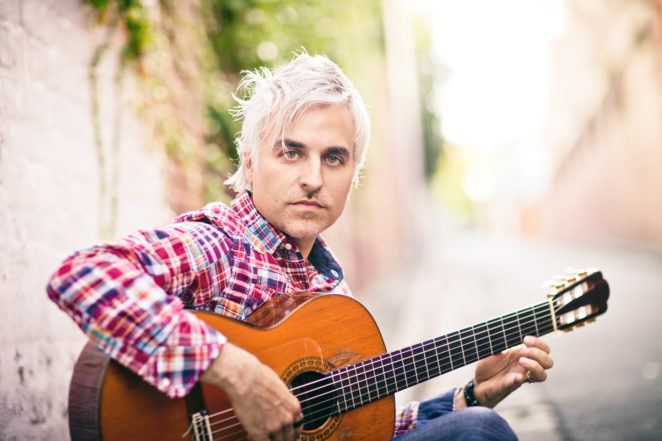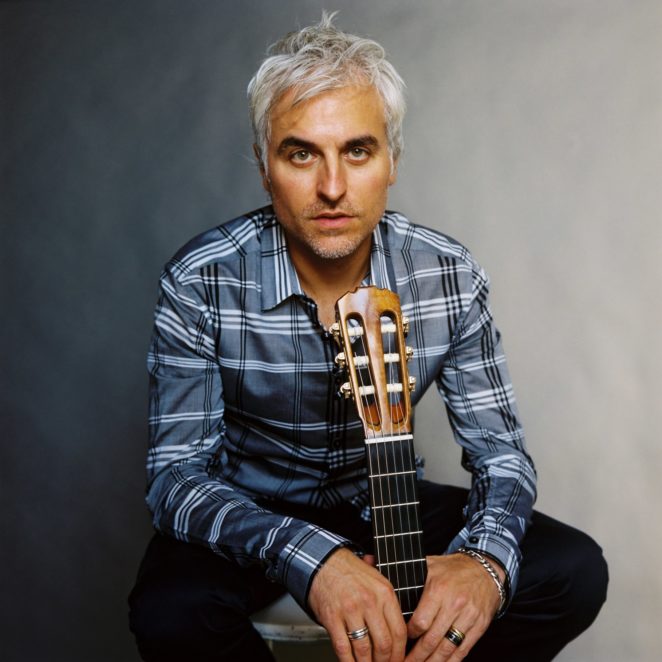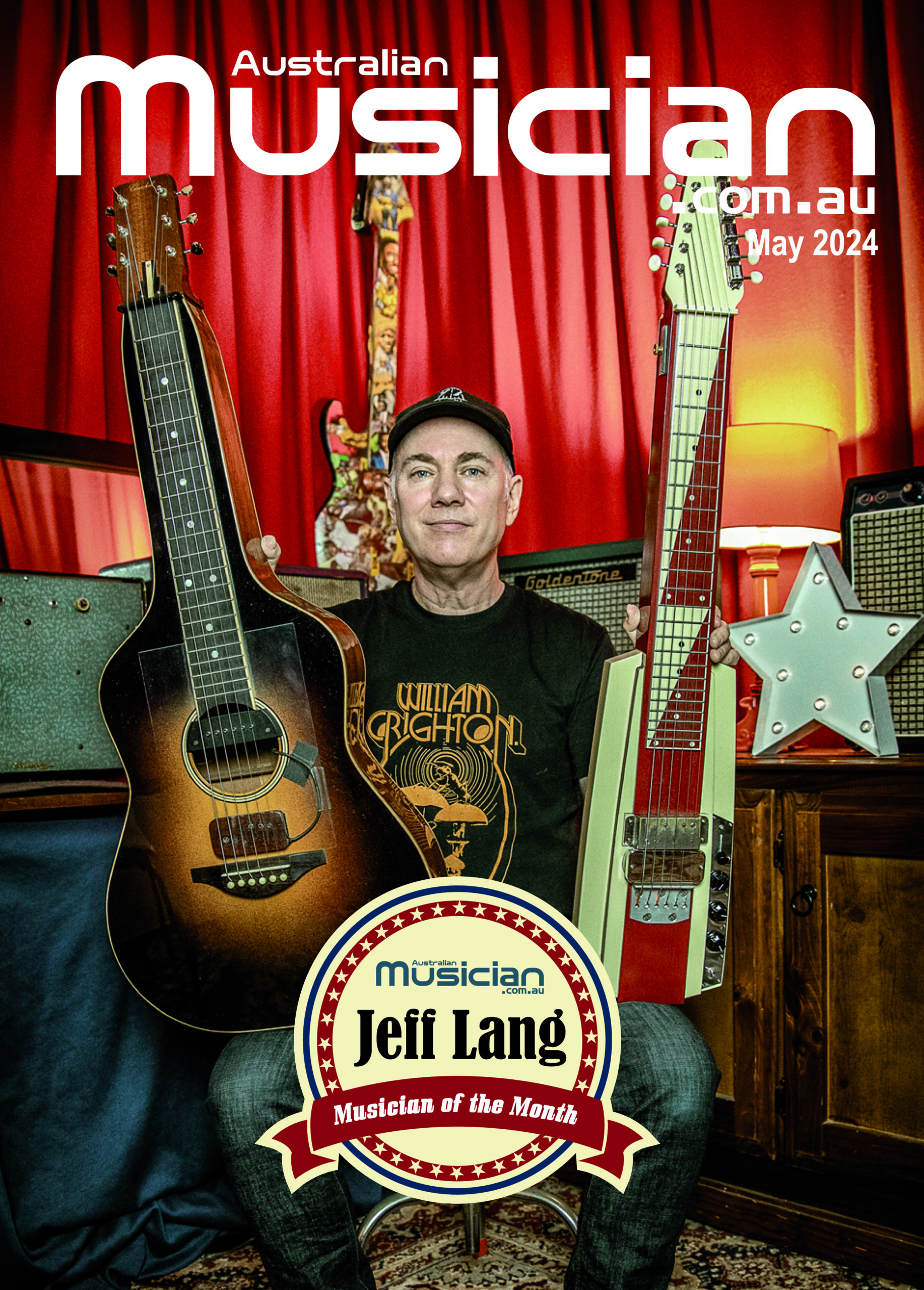
Born in Florence, Italy, Sergio Ercole spent his early years in the Tuscan city where he first became enamored with the guitar. Inspired by his parents’ eclectic music tastes, Sergio had developed an interest in a wide range of music. Moving to Australia, his love for the fretted instrument grew and was steered in a classical guitar direction by a music teacher while at secondary school. Sergio went on to complete a Masters of Music at Melbourne University – studying under John Griffiths and taking masterclasses with world-renowned guitarist John Williams before taking further study in Italy with Oscar Ghiglia and Alirio Diaz. His talents are well respected within the music industry, performers including The Cat Empire, and Hollywood film writer and musician, Tim Davies have invited Sergio to collaborate with them on their albums and on stage. Sergio was also asked to compose and perform the title track for Frank Lotito’s romantic comedy Big Mamma’s Boy. Recent projects include working with the Grigoryan Brothers, Italian classical virtuoso Massimo Scattolin, and flamenco guitarist Valentino. Over the last two years Sergio has performed at the Adelaide Guitar Festival, Peninsula Music Festival, Lorne Festival, the Murray River Music Festival, the Brunswick Beethoven Festival and the Melbourne Guitar Makers Festival. Sergio is currently Head of Guitar at Haileybury, and is also editor of LatinGuitarMastery.com and the Guitar Conversations podcast.
Sergio has performed at the Melbourne Guitar Show on several occasions and returns again this year to perform both in solo mode and also as part of Nick Charles’ acoustic guitar jam. Ahead of the guitar show, Australian Musician editor Greg Phillips spoke to Sergio about his music, his instruments and the guitar show.
Sergio, what are some of your earliest musical memories?
I remember first discovering the guitar. I was probably 4 or 5. I used to spend a lot of time with it on my lap, literally just plucking the strings on my dad’s really beaten up, dodgy classical guitar. That was when I was still living in Florence, so that and what my parents listened to. On one side there would be Wagner or Beethoven and then if my mum got hold of the record player, it was Bob Dylan or Cat Stevens, so I had this dichotomy of influences because my mum lived in New Orleans when she was a teenager in the 60s.
 Who were some of the guitarists that inspired you when you got into the guitar a little more?
Who were some of the guitarists that inspired you when you got into the guitar a little more?
I started guitar when I was at school so really it was just through the school’s guitar program that I discovered more about guitar. Inititially it was a lot of the 80s repertoire. You know in the 80s guitar was king and there was so much music. When a song comes on the radio now and it is any riff from the 80s, I remember my guitar teacher teaching me that riff, it was very popular. Then I started listening to a lot of generic stuff, not necessarily classical stuff even though my parents had John Williams, Alirio Diaz, Segovia records. There was a bit of that going on in the background but really my attention was very much in the electric direction, so I was listening to Stevie Ray Vaughan and Steve Vai and these crazy electric players. It was virtuosic. So that rock element is what was interesting to me in my teens years, then I had a classical teacher in year ten who encouraged me into a classical direction. Then I started listening to classical guitar, flamenco and things like that.
Teachers can be very important and inspiring. You are also a teacher. What are the main things you try to instill in your students?
What I feel my biggest job is in teaching guitar is to open up a world, like a portal into the world of the guitar. Once I open that up and its many facets, then hopefully I can engage the students. So that is my first job, to reveal the beauty and the variety and intrigue and magic of the guitar and then enough that they feel motivated for me to show them how to understand music and good technical fundamentals. If I can get good fundamental musicianship in there and some intrigue and a bit of a spark then I think the rest becomes much easier.
Tell me about your main guitar.
The guitar I am mainly using at the moment is a guitar I bought from a luthier in Seville when I was there two years ago. His name is Antonio Álvarez Bernal. It is actually a flamenco guitar but it is a flamenco guitar with classical overtones. It looks a bit like a classical but the internals are flamenco. It has a really punchy, crisp attack that I really love, especially in the basses but not too woofy. The trebles are also quite sparkly but I can produce some sweetness out of it as well, so I really enjoy that variety. Other guitars that I have are much more in the classical luthiery style, they have a bigger, concert sound, more air and body but at the expense of some of that crispiness that I like.
How important is the choice of strings that you use?
I go through phases. If it is a really good guitar … I don’t put cheap strings on it but I don’t pay massive amounts. D’Addario Pro Artes usually do he job. If I want extra punchiness in the trebles I might go titanium on the trebles, especially on the 3rd string. I might experiment with those sort of things. I’m not overly worried about it. I play often live and that’s like an extra layer of confusion to me. It comes down to the quality of the mic and the pickup.
What’s the hardest thing about mastering Spanish guitar?
Spanish guitar … if I was going to define it, is a sub-set of classical guitar and it is very romantic, expressive music but it also has to have a lot of rhythmic integrity. It is one of those styles of guitar where you need to understand timing implicitly and lyricism and phrasing implicitly and you begin to tell a story where you throw all of those things out the window. It is very much one of those things where you have to learn the lines and then just have fun with it. You have to have a very high level of technical and musical proficiency to make that work.
How do you generally record your guitar? How do you mic them up?
It is really difficult, I am still struggling with that. I was recently at a studio, Pughouse in Preston. He had a couple of really amazing mics, a ribbon mic and a very long mic that they used in the big band era. Often times the mics just pickup so much of the top end, you get a lot of the nail clicky sound. To be honest when I am playing, I don’t notice it but all of a sudden you stick a microphone in front of the guitar and start noticing all of this extra stuff that the mic is picking up that you don’t want in the mix. It is somewhere between miking and then doing some EQing. I have spoken to world famous guitarists who are very much into recording a very natural sound and then EQing the hell of it to make it sound like it does when you are not listening to it through a mic, if that makes sense? So I still haven’t actually conquered that challenge.
La Dolce Chitarra I believe is your latest release. Tell me about that album, the inspiration behind it etc.
It was a leap into the unknown which was writing my own music. I still record other people’s music but it’s a revolving process but that CD was very much about bringing the elements of classical and Latin together. I did that with some solo pieces but also with the help of a bass player and percussionist. It’s my cookbook of guitars bringing different elements together and experimenting with various textures, which might be from a flamenco direction or Brazilian or using classical or Italian elements. That was a few years ago now and the next album that is coming out will be like the next passage and that’s what I will be playing at the Melbourne Guitar Show… my latest recipes!
What are some of the most memorable gigs that you have played over your career?
I love playing at guitar festivals, so 2 years ago I was in Treviso and that was at he invitation of Andrea Vettoretti, who runs this really amazing festival in Italy. That was such a highlight playing to an Italian audience, being Italian. The Italians are such a music loving community and they just got it, so that was a real thrill. Playing at the Adelaide Guitar Festival, which I have done a number of times and in 2016 I was featured artist, which was great. You know … the limousine, you get picked up from the airport and everything is top shelf as far as venue and audience. I have done some gigs with The Cat Empire a few years ago, they are always memorable gigs playing at the Myer Music Bowl in front of 8,000 people. I also just love doing my shows at the Paris Cat which is an intimate audience but always a thrill to play to people who really fall in love with your music.
You have played the Melbourne Guitar Show before, what was your impression of the first MGS you attended?
It’s a hive of activity. Rob Walker is a bit of a master organiser in that he manages to bring in a variety of elements. Obviously there are a lot of guitars on stalls on display to bring people there to try but then the extra element of having virtuosos and amazing musicians at hand is I think, a really great thing to have in Melbourne. There is some chaos involved (laughs). I love the acoustic jam, where last time it was me, Doug DeVries, Nick Charles and a number of other incredible players in their own right, finding a common ground. I think that really sets the guitar show apart, bringing in that variety of styles. People can enjoy a real smorgasbord of guitar so that is a great thing for Melbourne to have.
What have you got planned for this year’s guitar show?
Again I will be playing a lot of new stuff, my own solo repertoire. I have adaptions of the pieces I play with my trio too. I like to think they test me technically as well, so pushing the boundaries a bit as well as being evocative. I always like to add some classical repertoire too, so I will be playing a couple of Scarlatti sonatas. A lot of the classical repertoire draws from the keyboard repertoire. These are actually keyboard pieces as Scarlatti wrote essentially for the harpsichord in the baroque era but he lived in Spain and like many Spanish keyboard composers, was very influenced by Spanish guitar.
Apart from the guitar show, what else have you got coming up?
I try not to think too far ahead but I have a really hectic schedule as head of guitar at Haileybury College and with my blog guitarmastery.com. Performance-wise, I do a monthly gig at T’Gallant Winery on the Mornington Peninsula, a couple of shows at the Paris Cat in October and towards end of he year. I have a couple of side things that I also do, a solo recital, a few regional things, a concert in Marysville on 29th of September and then a gig in Clunes. I’ll also be finishing the album and getting that out and seeing what else presents itself.
Sergio Ercole plays the Melbourne Guitar Show on Sunday August 4 at 11.30am on the new Exclusively Acoustic Stage in the 1876 Bar on Level 2 and then joins Nick Charles in The World of Acoustic Guitar jam at 1.40pm on the Marsh Mezzanine stage.


